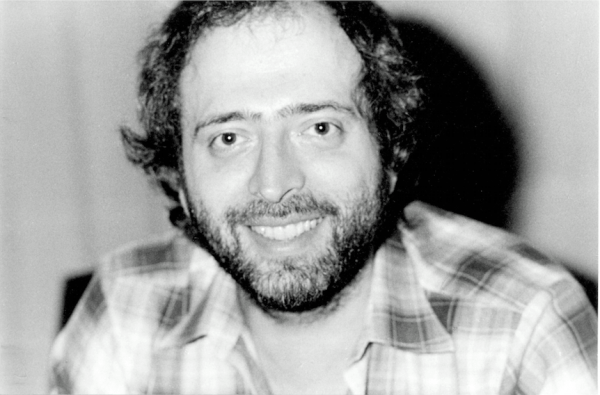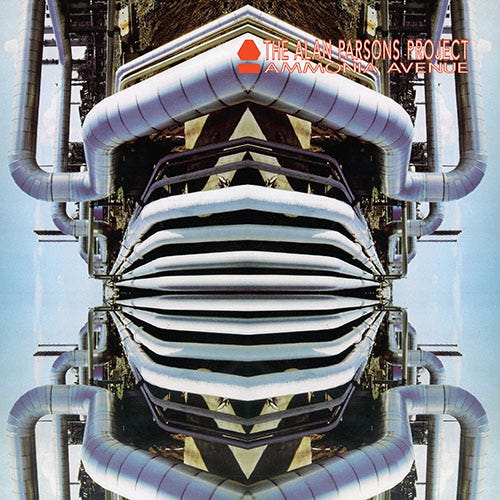First released in February 1984, Ammonia Avenue was the seventh album by The Alan Parsons Project, the brainchild of composer, musician and manger Eric Woolfson and celebrated producer and engineer Alan Parsons. In March, Esoteric Recordings release a new re-mastered limited edition deluxe expanded boxed set of the classic album, also available as a Blu-Ray edition.
“Eric Woolfson was another producer” Alan Parsons recalls. “He wasn’t incredibly successful at it, to be honest. His main occupation, really, was a songwriter. He did some writing for the likes of Chris Farlowe and the original 10cc, I believe. I met him around Abbey Road where I was working. He became my manager at a time when I was a producer. Very soon after that we became a song-writing team. That was around 1975 when we put together a conceptual album based on the works of Edgar Allan Poe”.

Tales of Mystery and Imagination (Edgar Allan Poe), the first of The Alan Parsons Project albums, showcased a panoply of voices. Zeffirelli protégé Leonard Whiting sang the cavernous The Raven, before vacating the microphone for blues savants John Miles and Arthur Brown. In the time honoured tradition, the songs sounded vast, cascading strings catching the arrogance, adulation and aspiration that a reader finds in Poe’s crepuscular words.
It worked for the album and proved a tradition that Parsons intended to keep on the subsequent albums. As an engineer/producer, Parsons had worked with Paul McCartney’s basso nova, David Gilmour’s ghostly falsetto and Joe Puerta’s jazz fused timbre, so variety was key. Behind him, sat bandmate Eric Woolfson, who by the 1980s had proven himself a very gifted vocalist.
“As you correctly pointed out, Eric had more vocals on Ammonia Avenue than he had before. He wasn’t always a natural singer and there were times that I didn’t always feel he was the right voice for the song. In fact, I didn’t actually think he was the right voice for Don’t Answer Me. I suggested getting someone else in, but he sang it and it became a big hit! How wrong was I [chuckles]”.
1982’s Eye In The Sky, perhaps The Alan Parsons Project’s most fondly remembered single, had proven a monster of a hit. It hit no.3 on the Billboard Charts, no.1 in Canada and Spain. Recognising Spain’s appreciation of his music, Parsons produced a Catalan version of the song, Seré els teus ulls al camí (“I’ll be your eyes on the road”), in 2019.
“I guess the success of Eye In The Sky influenced the album” Parsons replies. “I don’t think the album is conceptual, I think it flows together nicely. In that way it has a concept. I think the Ammonia Avenue title track is conceptual. The title comes from the ICI. It’s from Billingham, I think, somewhere up North. Eric was quite chummy with the head, John Harvey Jones. Eric went to the plant for a visit and saw the street sign, where he got the idea for the song”.
An extraordinary elegy, Ammonia Avenue pays a picture of a Britain changing from the industrial retinues to a future that paved a pathway for a newer generation of white collar workers. Traditions, tales and trades were left behind for a congregate of business oriented endeavours. It’s a lament for an England soon left behind entirely. It’s an astonishing song, Andrew Powell’s orchestral arrangements falling in and out of a mini-suite that waves from the homuncular to the bombastic.
“Andrew Powell worked with us from day one” Parsons remembers. “He’d been involved from the very beginning. We first worked on Pilot together and I met him through Steve Harley. Have you heard Steve Harley’s Sebastian? Andrew worked on that one and delivered a great arrangement. He did a great job on that one. I don’t think we had a particular influence, but we established an identity in our sound, there’s a degree to it in my production. I don’t know what people hear, but they say they recognise an Alan Parsons Project song when they hear it!”
It’s not entirely mournful as an album. Forgetting the passive title, You Don’t Believe sounds like a cross between seventies Fleetwood Mac and early noughties Gorillaz. Lenny Zakatek sings with spirited energy, while Colin Blunstone tackles Dancing on a Highwire with Cliff Richard & Shadows style earnestness. Instrumental number Pipeline returns listeners to the album’s factory settings, and the band could boast not one, but two AOR pop mainstays.
“We absolutely went for the Phil Spector sound on Don’t Answer Me” Parsons says. “It was a bit more sixties than fifties. I wanted to go for The Ronettes, The Righteous Brothers, that wall of sound. He produced a lot of terrific music. The song needed that huge, echoey sound. We had trouble getting the right feel, we considered dropping the song altogether, until we realised that’s what it needed. I think Colin jumped at the chance to sing on the album. I knew him from Hampstead and we drank in the same pub [laughs]. I never worked with The Zombies, but I did some stuff for Rod Argent. It wasn’t the first time we worked with him, that was The Eagle Will Rise Again, and from on then on we worked together.”
“I quite liked the video for Don’t Answer Me” Parsons continues. “It had a lot of good animation. I wasn’t quite so keen on the video for Prime Time. But Don’t Answer Me won some animation award from MTV, so we got a lot of airplay. I’ve just come off a tour in Germany. I played with John Miles, my old chum, and we recently did a gig [Night of The Proms] We played the Don’t Answer Me video in the background. I played one song from my new album.”
2019’s The Secret proved one of Parsons’ strongest works in years. Just as he compliments Woolfson on his vocal prowess, The Secret showed just how Parsons’ sounds on mike. Standout track As Lights Fall concerned fans with lyrics of “curtains calls” and “peaceful glens”. Retiring the veteran is pointless. “The album was about magic and it’s about a magician coming to the end of his career. The video with the pirates takes away from the magicians, but that’s fine. It’s not autobiographical. When we were writing it, Dan Tracey and I were writing about a performer looking at the end.”
One album celebrates magic, another Woolfson. The songwriter died in 2009, so Ammonia Avenue is the best place to listen to his wistful, eerie tone. It’s a work he and Parsons should be very proud of. “I think it still sounds good. I’m a great advocate of surround sound, so this project came me the chance to mix it. I’d like it to be heard in surround. I eased out some of the sound to be less eighties. The Simmons drums were fashionable at the time, all this “boing” stuff. And as you say Eric did a good job. He wasn’t a born singer, but we got the results we wanted in the end.”




